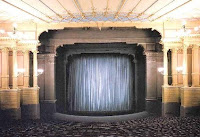Angel Falls is one of the top tourist place which is known for world’s highest waterfalls. The height of waterfalls is 979 m / 3,212 ft and a thrust of 807 m / 2,647 ft. It is located in the Canaima National Park which is a UNESCO World Heritage site in the Gran Sabana region of Bolivar State in Venezuela.
 The altitude of the falls is small that before getting anywhere near the ground, the water is atomized by strong winds and changed into mist. The mist can be felt a mile away. The bottom of the falls feeds into the Kerep River which is also called as Rio Gauya which flows into the Churun River, a tributary of the Carrao River.
The altitude of the falls is small that before getting anywhere near the ground, the water is atomized by strong winds and changed into mist. The mist can be felt a mile away. The bottom of the falls feeds into the Kerep River which is also called as Rio Gauya which flows into the Churun River, a tributary of the Carrao River.Angel Falls is called Kerepakupai meru in the native Pemon language meaning "waterfall of the deepest place". The falls are sometimes referred to as Churun-meru, an error which is the name of another waterfall in the Canaima National Park. Churun in the Pemon language means "thunder".
Sir Walter Raleigh described what a tepuy or table top mountain was, and he is discovered Angel Falls, but these claims are considered "far-fetched". They were spotted in 1912 by the Venezuelan explorer Ernesto Sanchez La Cruz, but he did not publicize his discovery. They were not known to the outside world until American aviator Jimmie Angel flew over them on 16 November 1933 on a flight while he was searching for a valuable ore bed.
Returning on October 9, 1937, Angel tried to land his Flamingo monoplane "El Rio Caroni" atop Auyan-tepui, but the plane was got stuck and he wasn't able to take off. Angel and his three companions his wife, Mr. Henry, and Henry's gardener were descend the tepui on foot. It took them 11 days to make their way back to civilization, but news of their adventure spread, and waterfall was named "Angel Falls" in his honor. Angel's plane remained on top of the tepuy for 33 years before being lifted out by helicopter. It was restored at the Aviation Museum in Maracay and now sits outdoors on the front of the airport at Ciudad Bolivar.

 A trip to the Angel Falls is not a simple affair. The falls are located in an isolated jungle region of Venezuela, and a flight from Caracas or Ciudad Bolivar is required to reach Canaima camp which is the starting point of river trips to the base of the falls.
A trip to the Angel Falls is not a simple affair. The falls are located in an isolated jungle region of Venezuela, and a flight from Caracas or Ciudad Bolivar is required to reach Canaima camp which is the starting point of river trips to the base of the falls.It is probable to buy a package that includes an aerial flyby of the falls. The falls cannot be seen on cloudy days, and there is no guarantee visitors will see them. River trips generally take place from June to December, when the rivers are deep enough for the wooden curiaras used by the Pemon Indian guides. During the dry season December to March there is less water seen than in the other months.









































